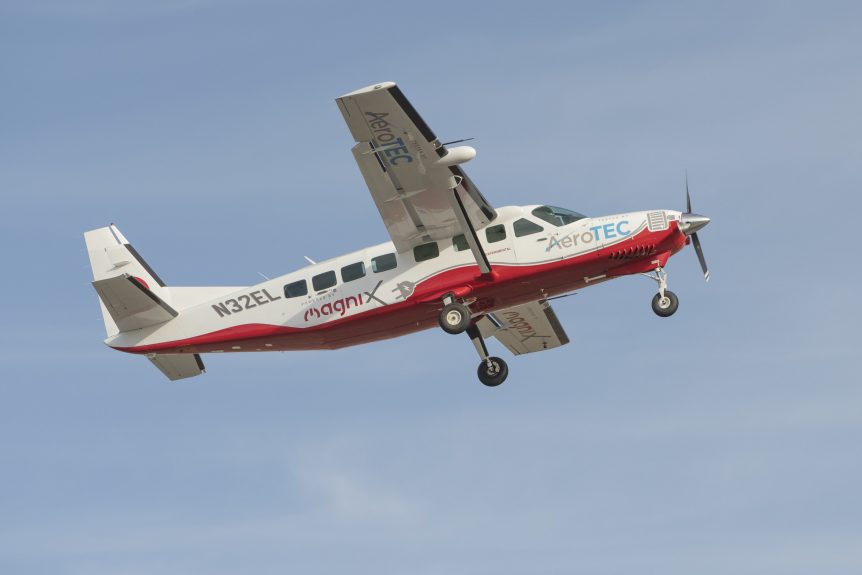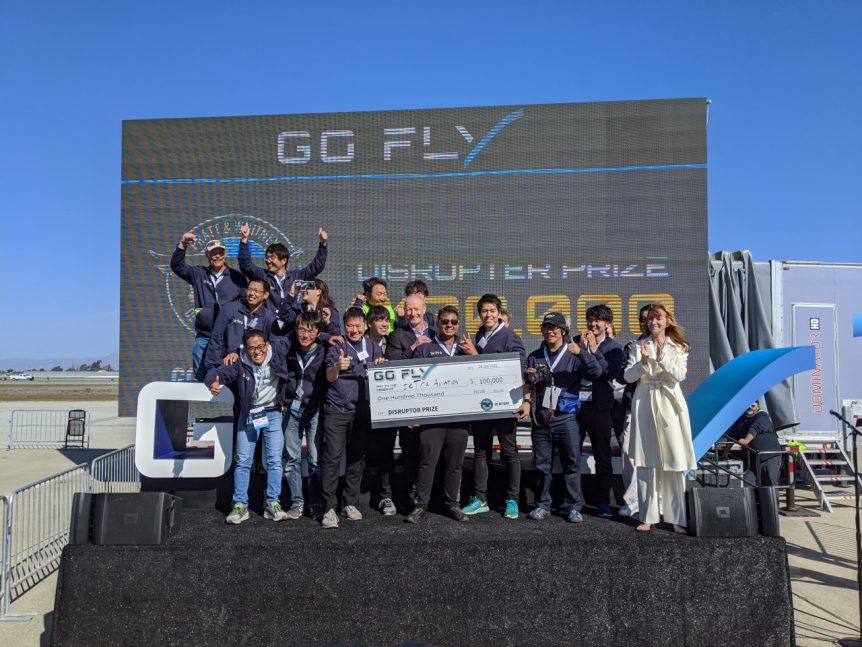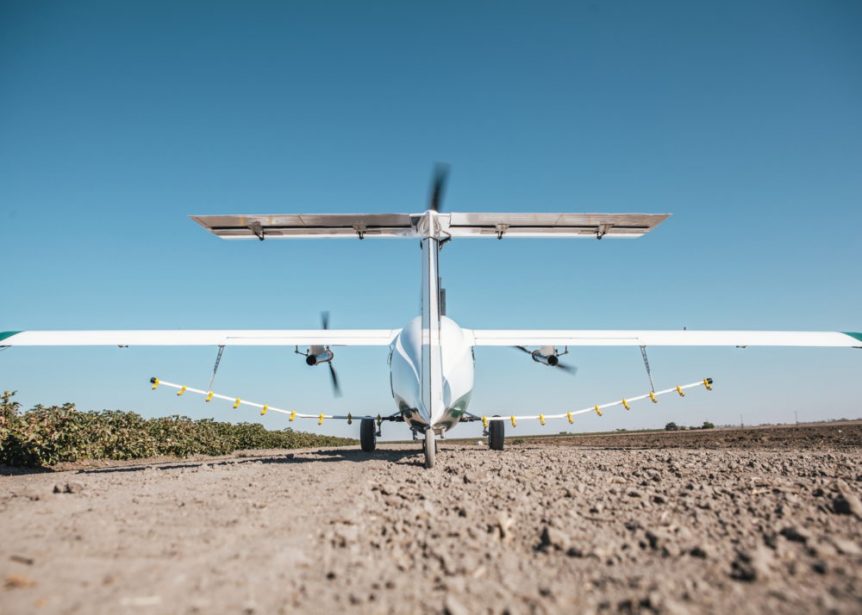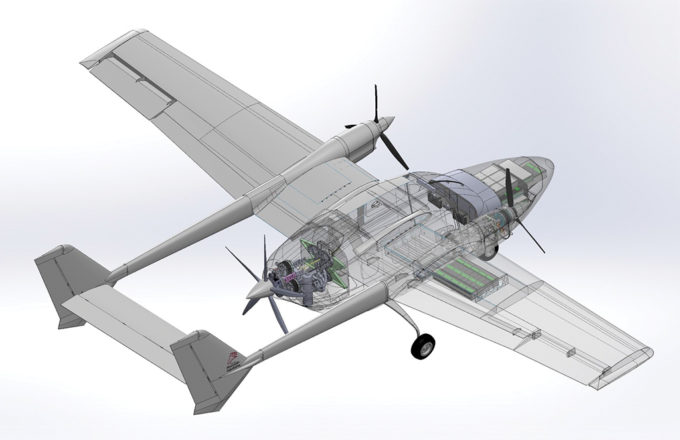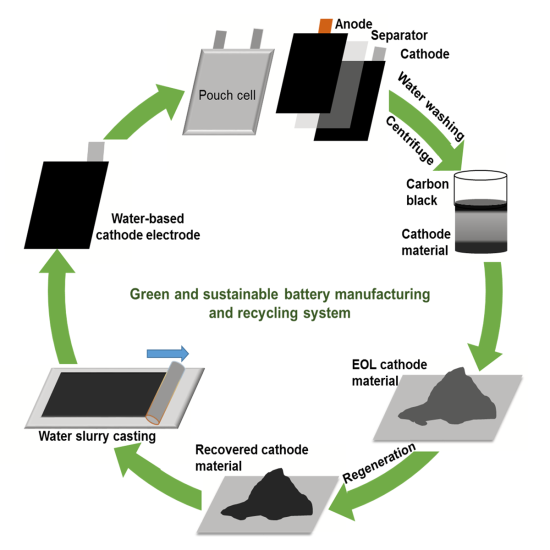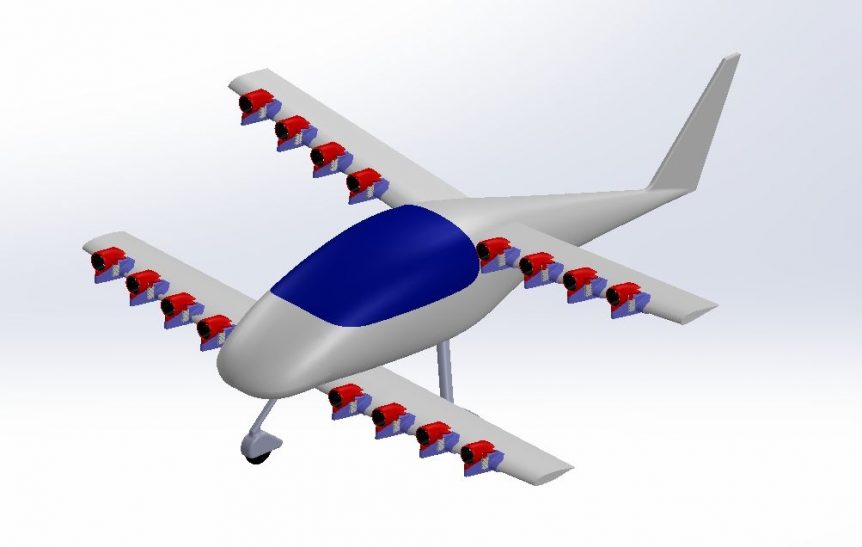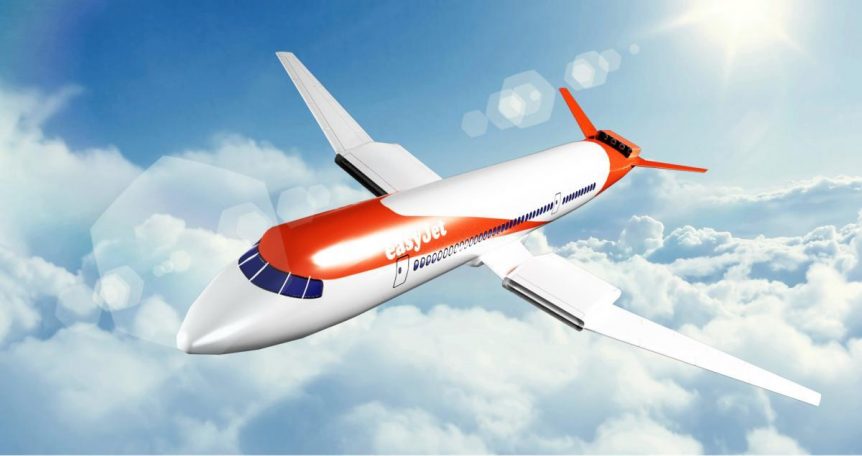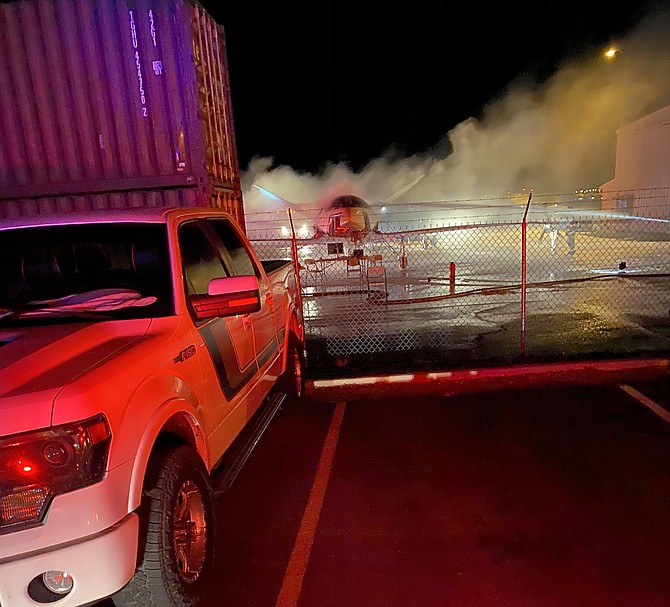Yesterday, a Cessna C208 Caravan lifted off from the AeroTEC Flight Test Center at the Grant County International Airport (MWH) in Moses Lake, Washington, being pulled aloft by a magniX 500 electric motor. The 750-horsepower (560 kW) magni500 propulsion system is the largest to fly so far, and seemed to pull the ten-passenger craft easily, lifting off early and establishing a stable rate of climb. At last year‘s Paris Air Show, Roei Ganzarski, CEO of magniX, guided visitors through the promising features of his firm’s two motors and its magniDrive inverter/motor controller. All three products, as shown in the video, have found homes on retrofitted and new airframes. Thursday’s flight went well. Ganzarski told reporters, “The flight went as I like all flights to go, uneventful. There [were] no issues — it worked exactly as planned, in fact performed a little better than planned. We landed with more battery than expected and the pilot really performed greatly.” There are compromises involved, …
GoFly Prize Will Have a Sequel
A well-produced video looking like a Christopher Nolan trailer for an upcoming Batman film — Silverwing’s preview of its coming attraction wraps us in a cocoon-like cockpit with a heads-up display to envy. Silverwing’s S1 was one of 20 machines to show up at Moffett Field in Mountain View, California for the GoFly Prize flyoff. As Beth Stanton reported in the May issue of Sport Aviation, the gathering represented the best of 854 teams from 103 countries who made it through the first phase of the competition over two years ago. The attrition rate may seem high unless one considers the difficulty level posed by the contest’s constraints. Beth’s article, “On the Edge of Possibility,” draws its title from a statement by Malcolm Foster, a GoFly judge and mentor, and director of special projects at GKN Aerospace. He explained the challenge involved: “The eight-and-a-half-foot diameter with current battery technology was right on the edge of possibility.” He referred to the …
Pyka: Electric, Autonomous, and Capable
“The Autonomous Airplane of the Future” Conceived in Oakland and Palo Alto, California but flying in New Zealand, Pyka’s fixed-wing electric aircraft represents a new approach in its design and application. Its makers say, “We’re building the autonomous electric airplanes of the future,” and its complement of innovative on-board electronics certainly seems to bear that out. eVTOL News reports Pyka co-founder and CEO Michael Norcia interned with Joby Aviation and moved on to spend two years as a power systems engineer with Wisk. Having experienced the difficulties with vertical lift, “…when Norcia and his co-founders — Chuma Ogunwole, Kyle Moore, and Nathan White — struck out on their own three years ago, they decided to take a more practical approach: sidestepping the technical challenges specific to VTOL (Vertical Take Off and Landing) aircraft with an STOL (Short Take Off and Landing) design, and the regulatory hurdles by seeking out unmanned applications to serve as stepping stones to future passenger-carrying operations.” …
VoltAero Has Ambitious Plans
VoltAero is a small French company that might succeed in electric flight where bigger firms have failed. Its hybrid-electric system marks an innovative path to quiet flight. Airbus ventured into electric aviation with a four-motor conversion of the Colomban cri-Cri in 2010 and a clean-sheet craft, the E-Fan, a sleek, essentially ducted fan two-seater in 2015. Initially big plans for production of two and four seat variants bloomed – then withered. Airbus dropped plans for the personal electric airplane market and instead concentrated on at least three versions of Urban Air Mobility devices and a hybrid-electric demonstrator based on a BAE 146 airliner. This last project, the E-Fan X, was canceled recently. Jean Botti was Chief Technology Officer for Airbus, and Didier Esteyne a test pilot for the Cri-Cri and E-Fan. Botti is now CEO of VoltAero: Esteyne its Technical Officer. VoltAero has ambitious plans for its hybrid electric future, and management experience to pull them off. Flying VoltAero’s unique …
Making and Recycling LIBs Cleaner, Safer
What if we could make the process of making LIBs (Lithium Ion Batteries) a lot safer, their use less hazardous, and their recycling a low-risk enterprise? Virginia Tech researchers think they have positive answers to all three questions. By substituting water for organic solvents normally used in making LIB electrodes, researchers at Virginia Tech (Virginia Polytechnic Institute and State University), “…found that the electrodes fabricated via water-based processing demonstrate comparable rate performance and cycle life to the ones from conventional solvent based processing.” Beyond that, in a seeming bit of alchemy, using water-based processing with a water-soluble binder, “…enabled recovering the cathode compound from spent electrodes using water, which could be successfully regenerated to deliver comparable electrochemical performance to the original, pristine electrode.” “Humongous” Amount of NMP N-methyl-2- pyrrolidone (NMP), used as a solvent in making LIB electrodes, is expensive and harmful to reproductive functions. It was added to the European Commission’s restricted list in 2018. Despite those concerns, one …
JabirWatt: PAI and DEP with David Ullman
Electric aircraft, especially in their early state of development, will require aerodynamically capable forms or extremely light structures, or both. That may account for the early adoption of sailplanes as test beds. These are graceful and high performance units, but not all that practical for hauling loads or for daily commuting. Other first attempts adapted ultralight, but not necessarily aerodynamically efficient structures to make electric flight possible. David Ullman makes use of two dynamic technologies, PAI and DEP, to achieve performance with the potential for great practicality. PAI and DEP David, a professor emeritus in mechanical engineering, is also an enthusiastic pilot and inventor. His texts on the design process and decision making are best sellers. Recently, he’s been exploring the potential of Propulsion Airframe Interaction (PAI) and Distributed Electric Propulsion (DEP) by augmenting the power and lift of a conventional aircraft with Electric Ducted Fans (EDF). A Creative Airport Community If you are fortunate enough to visit the Independence, …
Restarting the Blog with Bad News – and Some Hope
Your editor is back in action (in slow motion) having experienced two holes in his stomach, patched neatly by modern medicine and skilled practitioners. All is reasonably well and getting better. Certainly better than two well-publicized battery fires. The Bad News Coming out of the recent fog, your editor received an email from Karl Kaser (Kasaero) with dreadful news. One of two Lilium prototypes had burned, somewhat similar to the recent loss of the Eviation Alice in Prescott, Arizona. Battery fires are of great concern for the future of the emerging industry. A podcast on the company claims the firm is the, “Best funded air taxi startup in the world,” with 100 million Euros in venture capital riding on its success. Up to that point in late 2019, Lilium’s worst day was when a co-founder flew a small 3D-printed prototype into a tree. They have since been surpassed in funding because of Joby’s recent near-unicorn windfalls. This comes as a …
APUS Introduces Two Zero Emission Craft
We’ve written several times about structural batteries in this blog, from Dr. Emile Greenhalgh’s early research at Imperial College to more recent efforts along the same line. Interestingly, the basic idea remains very much the same over a decade. Energy storage would take place in a monocoque-type structure that could use carbon fiber, fiberglass, and even graphene as a structural material, while acting as a battery. Now some of this thinking is being applied to hydrogen storage in wings. “TubeStruct™” APUS, an aircraft design, structure and certification operation in Strausberg, Germany, offering a full range of services including flight training. They recently announced two new craft, both featuring hydrogen fuel systems contained in a novel “… patented structurally integrated hydrogen storage system, known as TubeStruct™.” In the shadow drawings of the airplanes, the tubes appear as though they could double as redundant wing spars. The i-2, a four-seat Normal-Category (CS-23) aircraft; and “The APUS i-6 is a technology demonstration platform …
Wright Electric Reveals Big Plans
While most anticipated new electric aircraft don’t seem to exceed 50 seats, Wright Electric has begun a more ambitious program for its 186-seat electric airliner, Wright 1. In a January 30 press meeting at the Refinery Hotel in lower Manhattan, Wright announced plans to move forward with their design and testing program for a substantial electric airliner. Wright CEO Jeffrey Engler promised: “Wright Electric is dedicated to bringing low-emissions 186-seat electric planes systems to market. Wright Electric’s mission is to make commercial aviation greener, and our megawatt engine program is the next step in making our mission a reality.” Wright’s plans include moving its headquarters to Albany, New York, “to take advantage of the extraordinary local engineering talent.” Wright will work with BAE Systems, “…to help to accelerate the new technology.” A big part of that new technology will be the 1.5 megawatt electric motor and supporting three kilovolt inverter to control all those currents. Such powerplants are substantially greater …
Eviation’s Alice Involved in Fire
Time magazine lauded Eviation’s Alice last year, ranking it as one of the 100 Best Inventions of 2019. Alex Fitzpatrick compared its green goodness to the GHG-loaded nature of commercial aviation. “Flying is dirty work—the aviation industry emits nearly a quarter of total transportation-related greenhouse-gas emissions in the U.S., according to the EPA. One way to clean it up could be Eviation’s all-electric Alice, an Israeli-made nine-seater meant to convince the gas-guzzling aviation world that electric power is ready for takeoff. “The real innovation is in the lightweight materials rather than the batteries and motors and controllers and all that,” says Eviation CEO Omer Bar-Yohay. If successful, the design could pave the way for larger electric commercial aircraft. Alice, which has a range of 650 miles and should be quieter than gas-powered aircraft, begins flight testing in 2020.” The bright future for the tri-motored airplane, which shone at the Paris Air Show and a prototype of which was about to …

